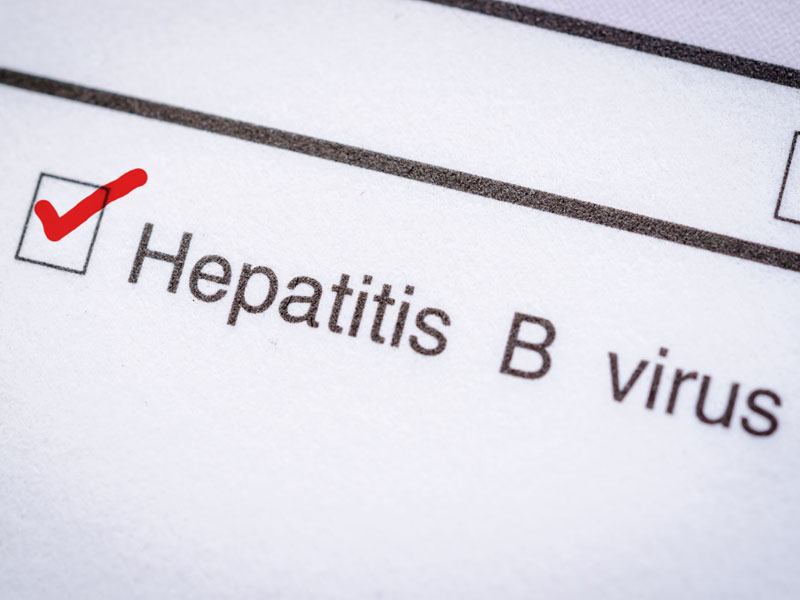USPSTF Final Recommendation
Screen At-risk Individuals for Hepatitis B Virus Infection
January 7, 2021, 12:43 pm News Staff — On Dec. 15, 2020, the U.S. Preventive Services Task Force posted a final recommendation statement, final evidence review and evidence summary on screening for hepatitis B virus infection in adolescents and adults.

Based on its review of the evidence, the task force recommended screening for HBV infection in adolescents and adults at increased risk for infection to help prevent serious health problems. This is a “B” recommendation.
“Screening teens and adults who are at increased risk for hepatitis B infection can help detect the virus and enable treatment to prevent serious health effects,” said Chyke Doubeni, M.D., M.P.H., a family physician and member of the task force, in a news release. “Evidence consistently shows that screening and early treatment leads to better health outcomes.”
The recommendation applies to asymptomatic nonpregnant adolescent and adults at increased risk for HBV infection, and includes individuals who were vaccinated prior to being screened for HBV infection. The task force issued a separate recommendation statement on screening for HBV infection in pregnant women in 2019.
About 22,000 people in the U.S. become infected with HBV each year, and because many of those who are infected don’t have any visible signs or symptoms of infection, they may unknowingly spread the virus to others or develop a life-long, chronic infection. Moreover, it is estimated that up to 25% of all people with chronic HBV infection die prematurely from conditions such as cirrhosis, hepatocellular carcinoma and liver failure.
Update of Previous Recommendation
The final recommendation is consistent with the task force’s May 2020 draft recommendation statement on screening for HBV infection, as well as its 2014 recommendation statement on the topic.
Story Highlights
Although the AAFP supported the 2014 recommendation statement with regard to high-risk individuals, it should be noted that the Academy recommends against routinely screening the general asymptomatic population for chronic HBV infection.
To update the 2014 recommendation, the USPSTF commissioned a systematic literature review. The review consisted of randomized trials and cohort studies published between 2014 and August 2019 that examined the benefits and harms of screening and antiviral therapy for preventing intermediate outcomes or health outcomes, and the association between improvements in intermediate outcomes and health outcomes. A total of 50 studies were included.
As in the previous evidence review, the task force determined that HBV screening tests are accurate, with a sensitivity and specificity both greater than 98%. However, there was no direct evidence on the clinical benefits and harms of HBV screening versus no screening.
Analysis of the randomized trials found that antiviral therapies such as entecavir and tenofovir disoproxil fumarate were effective in achieving various intermediate outcomes such as hepatitis B e-antigen loss, hepatitis B e-antigen seroconversion, hepatitis B surface antigen loss, alanine aminotransferase normalization, HPV DNA suppression and histological improvement, as well as several composite intermediate outcomes. With regard to clinical outcomes, the review also found that antiviral therapy was associated with decreased risk of mortality and may be associated with decreased risk of cirrhosis and hepatocellular carcinoma.
Along with these findings, the task force called for additional research to provide a better understanding of the benefits and harms of screening for HBV infection. Task force members also stated that more research was needed on long-term clinical outcomes associated with the use of preferred antiviral therapies for chronic HBV infection.
Response to Public Comment
A draft recommendation statement on screening for HBV infection was posted for public comment on the USPSTF website from May 5 through June 1, 2020.
In response to concerns that a number of high-risk populations were not discussed, along with requests for further information on follow-up testing and implementation, the task force posted several resources for clinicians in the Additional Tools and Resources section of the final recommendation, including
- a fact sheet on interpretation of hepatitis B serologic test results;
- a hepatitis B question-and-answer document;
- a link to a Morbidity and Mortality Weekly Report paper titled “A Comprehensive Immunization Strategy to Eliminate Transmission of Hepatitis B Virus Infection in the United States;”
- information on HBV prevention, vaccination, transmission, screening, counseling and treatment; and
- resources on hepatitis B for professionals.
The task force also updated the Practice Considerations section of the final recommendation to address combinations of risk factors and screening intervals.
Next Steps
The AAFP’s Commission on Health of the Public and Science plans to review the USPSTF’s final recommendation statement and evidence summary and will then determine the Academy’s stance on the recommendation.